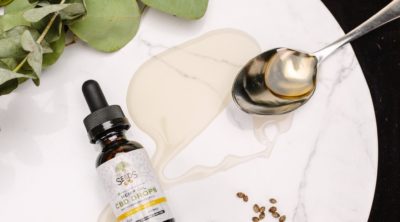
Lymphatic drainage massage is an alternative healing therapy that can be used to treat lymphatic obstruction. Scroll down to know more about this massage therapy.
The lymphatic system of the human body performs the vital function of maintaining the balance of fluids in our body. It consists of a network of ducts and lymphatic vessels that facilitate the movement of lymph. These lymphatic vessels and ducts are connected to the lymph nodes. Lymph nodes are bean-shaped masses of lymphoid tissues that are located throughout the body. The lymph nodes contain specialized structures that not only trap the disease-causing agents from lymph that is returning to blood, but also destroys them. At times, the circulation of the lymph fluid can slow down due to the poor lifestyle choices we make. This can lead to accumulation of harmful toxins around the cells, thereby affecting the cellular oxygenation and regeneration of cells and tissues in an adverse manner. If the toxins and pathogens are not flushed out of the body, the lymph nodes may swell up. Under such circumstances, the white blood cell count would become low and one may become susceptible to several health problems. Since the fluid in the lymphatic system does not have its own pumping mechanism, a specific kind of massage therapy is recommended for clearing the congestion in the lymphatic system. Here’s some information about this massage therapy for lymph drainage.
Massage for Drainage of Lymph
It was in early 1930s in France that Dr. Emil Vodder and his wife Dr. Estrid Vodder developed the concept of manual lymph drainage massage. This technique has become quite popular and is now being used by massage therapists to manage the symptoms of lymphedema (swelling caused by accumulation of lymph in the affected tissues). Lymph drainage massage techniques are different from the ones used in other kinds of massage. As mentioned earlier, the lymphatic system doesn’t have its own pumping mechanism. While practicing manual lymphatic drainage (MLD) therapy, trained massage therapists use gentle and rhythmic massaging strokes to facilitate the circulation of fluids. The rhythm, direction and order of the strokes is very important for stimulating the flow of fluids in the lymphatic system. The strokes must be directed towards the correct node. The correct rhythm stimulates the parasympathetic nervous system, and that makes the client feel relaxed.
Gentle, rhythmical strokes help to form new lymph drainage pathways. It is extremely important to ascertain the right amount of pressure that must be applied in order to direct the excess lymph to flow into the lymph capillaries. The massage therapists usually use four types of strokes for clearing the congestion. These include stationary circles, rotary technique, scoop strokes and pumping techniques. Lymph nodes are located close to the skin which is why applying a little pressure on the affected area with repetitive massaging strokes can facilitate the drainage of lymph. Stationary circles refer to light finger strokes that are administered in circles. These strokes are applied over the neck or the face.
For the rotary technique, the therapist uses his/her palm to lightly massage the skin in circles. The therapists uses his/her wrists to alter the pressure of the strokes. For pumping strokes, the therapist put the palm on the affected area and uses the fingers and thumb for making oval strokes. For scoop strokes, the therapist’s palms should be facing up while the fingers are outstretched. The therapist moves his/her cupped hands to apply twisting strokes for facilitating the disposal of wastes. For the aforementioned strokes, the hand movements must be gentle and steady. The therapist must assess the rhythm and the direction of the lymphatic flow. The strokes must direct the excess fluid to the lymph nodes that would facilitate the drainage of the excess lymph. Only the right strokes can encourage the lymph to flow into the capillaries
If you are planning to go for such a massage, don’t consume alcohol before the session. You must not have a heavy meal before your session. Since a lot of fluid might be purged from the tissues to the kidneys, you might have to pass urine more frequently. You must therefore drink lots of water after the session to compensate for the loss of fluids. This therapy is very effective for the treatment of lymphedema.
Herbs for Treating Lymphatic Blockage
If you are not very keen on getting a massage, you can also use certain herbs to stimulate the lymphatic vessels. Herbs such as cleavers, basil, marshmallow root, plantain herb, red clover, yellow dock root, dandelion or seaweed are believed to be effective in removing toxins and draining lymphatic fluids. Most of these herbs are medicinal in nature. Lymphatic vessels perform the essential function of delivering nutrients, antibodies and other immune constituents to the tissue cells of the body. It is therefore essential to clear this congestion as soon as possible. If you are planning to use these herbs for stimulating your lymphatic system, consult an expert to know which of these herbs would work well for you.
If you are planning to undergo massage therapy for improving the flow of lymph, it would be in your best interest to consult your doctor. Once your doctor gives a green signal, you should begin your search for a certified practitioner. You must also make lifestyle-related changes to prevent lymphatic blockage in future.
Disclaimer: This Buzzle article is for informative purposes only, and should not be used as a replacement for expert medical advice.


